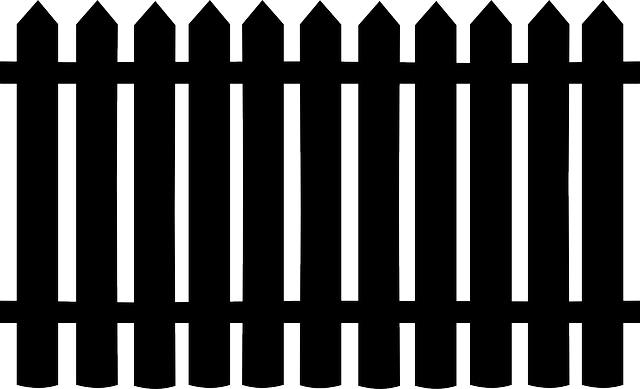Introduction
Maintaining an appealing and durable wooden fence is easier than you think. This comprehensive guide delves into the essential aspects of fence staining and sealing, offering practical insights to transform your outdoor space. From understanding the benefits and diverse types of stains to step-by-step application processes and long-lasting maintenance tips, we equip you with the knowledge to achieve a professionally stained and sealed fence that enhances your property’s aesthetics and value.
- Understanding Fence Staining: Benefits and Types
- Preparing Your Wooden Fence for Staining
- Choosing the Right Stain: Color and Finish
- Applying Stain: Step-by-Step Guide
- Sealing for Protection: Importance and Methods
- Maintenance Tips for Longevity of Stained Fences
Understanding Fence Staining: Benefits and Types
Fence staining is an essential process that enhances the aesthetics and longevity of wooden fences. It involves applying a protective coat of stain to the fence’s surface, which not only adds a desirable color but also seals the wood, preventing weather-related damage. Understanding the benefits and various types of fence staining is crucial for homeowners looking to maintain their outdoor spaces.
One of the primary advantages is the improvement in visual appeal. Staining allows you to transform the look of your wooden fence instantly, offering a range of colors and finishes to suit different preferences and architectural styles. Moreover, it provides a layer of protection against elements like UV radiation, rain, and snow, which can cause wood to rot or fade over time. Different types of stains are available, each with unique properties; oil-based stains, for instance, offer deep penetration and long-lasting protection, while water-based options are more environmentally friendly but may require more frequent reapplication.
Preparing Your Wooden Fence for Staining
Before applying stain or sealant, preparing your wooden fence is a crucial step in ensuring optimal results and extending the life of the finish. Start by thoroughly cleaning the fence to remove any dirt, dust, mold, or mildew that may be present. Use a pressure washer or a stiff-bristled brush with mild detergent and water to achieve a clean surface. Drying the fence completely is essential; use a clean towel or allow it to air dry for several days if possible.
Next, inspect the fence for any damaged or rotten sections. Repair or replace these areas to ensure the stain adheres properly. Sanding the fence slightly can also help create a rougher surface, allowing the stain to bond better. Make sure all tools and surfaces are free from debris and dust, as these can transfer onto the fresh stain.
Choosing the Right Stain: Color and Finish
When choosing the right stain for your wooden fence, color plays a significant role in enhancing its aesthetics. Consider the ambiance you wish to create – whether it’s a natural, rustic look or a vibrant, bold statement. Dark colors like black and deep browns can add drama and depth, while lighter shades of gray or beige offer a subtle, elegant touch. Neutral tones are versatile, allowing your fence to blend in with surrounding landscapes or serve as a striking focal point.
Finish is another crucial factor. Water-based stains offer easier application and faster drying time, making them ideal for DIY projects. They also emit fewer odors and are generally more environmentally friendly. Semi-transparent finishes allow the natural grain of the wood to show through, while transparent options provide complete opacity. For added protection against elements like UV rays and moisture, opt for a sealer that complements your chosen stain.
Applying Stain: Step-by-Step Guide
Applying stain to your wooden fence is a straightforward process, but it requires precision and attention to detail. Start by gathering all the necessary tools and materials, including your chosen fence stain, a brush or roller suitable for staining, protective gear, and drop cloths to cover nearby surfaces. Ensure the wood is clean and dry; any debris or moisture could affect the stain’s adhesion.
Begin at one corner of the fence and apply the stain in even strokes, working from the top down. Maintain a consistent thickness of stain on your brush or roller to avoid streaks. Allow the first coat to dry according to the product instructions. If needed, apply additional coats with the same technique, waiting for each layer to set before proceeding.
Sealing for Protection: Importance and Methods
Sealing a wooden fence is an essential step in preserving its beauty and longevity. Wood is naturally susceptible to weather conditions, with elements like rain, sun, and wind causing it to deteriorate over time. Sealing acts as a protective barrier, shielding the fence from these environmental factors. It prevents water absorption, which can lead to rot and warping, and provides a shield against UV rays that cause fading and cracking.
There are various methods for sealing a wooden fence, each offering different levels of protection and durability. Some sealants are based on oil or wax, providing a deep penetration into the wood’s pores to nourish and protect. These types are ideal for enhancing the natural look of the wood while offering moderate weather resistance. On the other hand, water-based sealers are more popular for their ease of application and quick drying time. They offer excellent protection against moisture and UV damage but may not penetrate as deeply as oil-based options.
Maintenance Tips for Longevity of Stained Fences
Regular maintenance is key to ensuring your stained fence remains vibrant and durable for years to come. After staining, allow the finish to cure completely before exposing it to harsh weather conditions. This typically takes 24-48 hours. Thereafter, a yearly cleaning and reapplication of sealant are recommended. Start by pressure washing the fence to remove any built-up dirt or debris. Use a soft-bristled brush to gently scrub any tough spots. Rinse thoroughly and allow to dry completely before sealing. Reapplying sealant will not only protect against fading but also fill in any gaps or cracks that may have developed over time, enhancing the overall aesthetic of your fence.
